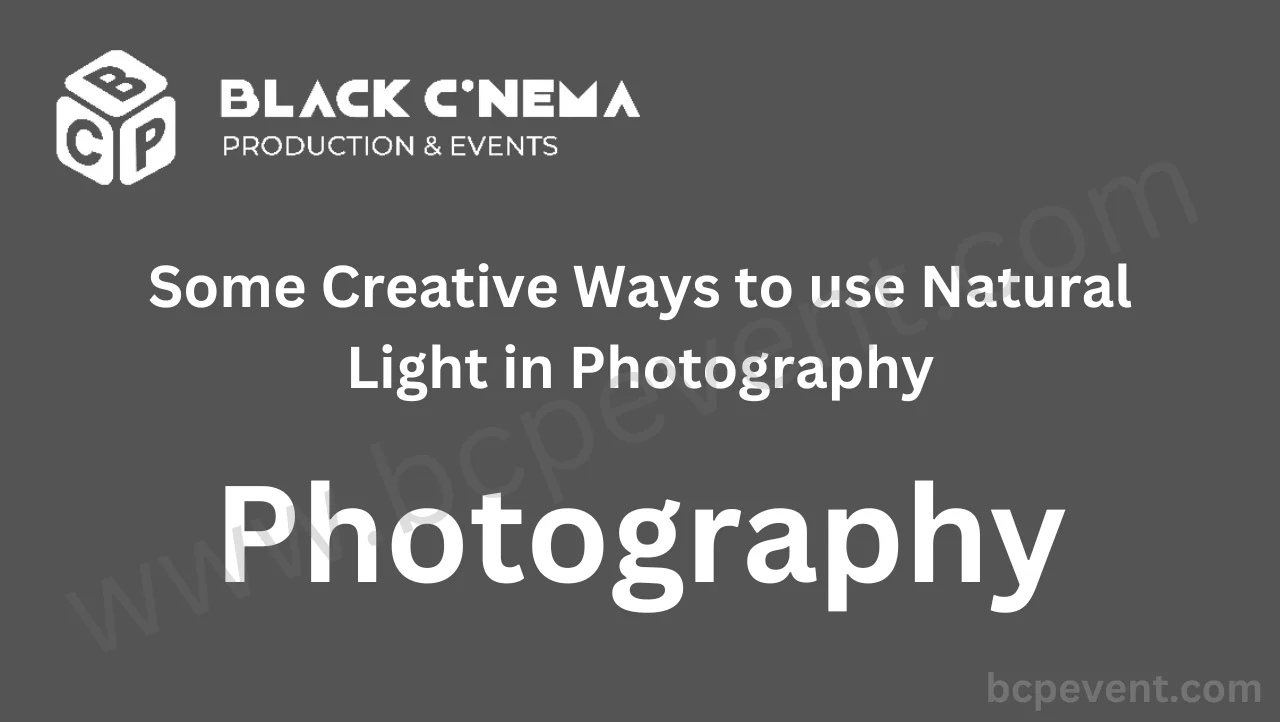
Introduction:
Natural light can be a powerful and versatile tool in portrait photography. It offers a unique quality, softness, and natural ambiance that can enhance the mood and aesthetics of your portraits. Knowing how to creatively use natural light can help you capture stunning and captivating portraits. In this guide, we will explore some creative ways to utilize natural light in portrait photography.
Golden Hour: The golden hour, which occurs during the first hour after sunrise and the last hour before sunset, is known for its warm and soft light. Take advantage of this magical time of day to create a beautiful and flattering glow on your subjects. Position them facing the sun to create a halo effect or backlight them to create a dreamy and ethereal atmosphere.
Window Light: Window light is a fantastic natural light source that can be used for indoor portraits. Place your subject near a large window and let the soft diffused light fall on their face. Experiment with the direction and angle of the light to create different moods and shadows. You can also use sheer curtains or blinds to manipulate the intensity and direction of the light.
Open Shade: When shooting outdoors, look for areas of open shade, such as under a tree or an awning. Open shade provides even lighting without the harshness of direct sunlight. Place your subject in the shade, facing towards the open area where soft ambient light is illuminating the scene. This way, you can achieve well-exposed and evenly lit portraits with pleasing skin tones.
Reflectors: Reflectors are a versatile tool for manipulating natural light in portrait photography. They bounce and redirect sunlight onto your subject, filling in shadows and creating a more balanced lighting situation. Use a white reflector for a subtle fill light, a silver reflector for more contrast and definition, or a gold reflector for warm tones and a sun-kissed effect.
Silhouettes: Silhouettes can be a creative way to capture the beauty of natural light. Position your subject against a bright background, such as a sunset or a well-lit window. Expose for the background, allowing the subject to be underexposed and appear as a dark silhouette. This technique can create dramatic and eye-catching portraits with a strong graphic element.
Dappled Light: Embrace the play of light and shadow created by dappled light, often found under tree canopies or in areas with scattered light. This type of light can add an artistic and whimsical touch to your portraits. Experiment with different compositions and angles to incorporate the patterns and textures created by the interplay of light and shadow.
Backlighting: Backlighting is a technique where the main light source is positioned behind the subject, creating a luminous and glowing effect. It can produce striking rim light, hair highlights, and a sense of depth. Take care to properly expose for the subject’s face to avoid underexposure, and use a reflector or fill flash if necessary to balance the exposure.
Environmental Light: Incorporate the natural light of the environment to add depth and character to your portraits. For example, shooting near a window with interesting patterns or using the light streaming through leaves or architectural elements can create unique and visually appealing effects. Pay attention to the interplay between the subject and the environment to tell a story through light and composition.
Remember, each lighting situation and portrait subject is unique, so it’s essential to adapt these techniques to suit the specific scenario. Observe and experiment with different lighting conditions, be mindful of the quality and direction of light, and embrace the creative possibilities that natural light offers to capture stunning and expressive portraits.
Effectively Capture Fast-Moving Subjects
Effectively capturing fast-moving subjects, such as sports or wildlife, requires a combination of skill, technique, and equipment. Here are some tips to help you capture compelling images of fast-moving subjects:
Use a Fast Shutter Speed: The key to freezing motion is using a fast shutter speed. Set your camera to Shutter Priority mode (S) or Manual mode (M) and select a high shutter speed, such as 1/500th of a second or faster. This will help you capture the action with minimal motion blur.
Predict the Action: Anticipating the movement of your subject is crucial for capturing the right moment. Observe and study the behavior of the subject beforehand, whether it’s a sprinting athlete or a bird in flight. Predicting their movements will help you be prepared and position yourself in the right spot to capture the action.
Continuous Autofocus (AI Servo/AF-C): When shooting moving subjects, use the continuous autofocus mode (AI Servo for Canon, AF-C for Nikon) to track and maintain focus on your subject as it moves. This mode continuously adjusts the focus to keep up with the subject, increasing the chances of capturing sharp images.
Select the Right Autofocus Point: Depending on your camera, choose the appropriate autofocus point or zone to track the subject accurately. Use a single-point autofocus mode for precise focus control or a dynamic/expanded focus point mode for subjects that move erratically. Experiment with different focus settings to find what works best for your specific situation.
Burst Mode/Continuous Shooting: Enable burst mode or continuous shooting to capture a rapid sequence of images. This feature allows you to capture multiple frames in quick succession, increasing the likelihood of getting the perfect shot with the desired pose or action. Be mindful of your memory card capacity and shoot in short bursts to avoid filling up the buffer quickly.
Pre-focus: If you know where the action will take place, pre-focus on that spot in advance. By pre-focusing, you can reduce the time it takes for the autofocus to lock onto the subject when it enters the frame, increasing your chances of getting a sharp image.
Proper Panning Technique: Panning involves tracking a moving subject while keeping it relatively sharp against a blurred background. To achieve this effect, use a slightly slower shutter speed (around 1/60th of a second) and pan your camera along with the subject’s movement. Start tracking the subject before pressing the shutter and continue the motion even after taking the shot.
Consider Your Composition: While capturing fast-moving subjects, pay attention to the composition of your image. Leave enough space in the frame in the direction the subject is moving to create a sense of anticipation or convey the subject’s trajectory. Also, consider using a longer focal length or zoom lens to isolate the subject and eliminate distracting elements.
Practice and Patience: Capturing fast-moving subjects requires practice, patience, and a bit of trial and error. Spend time familiarizing yourself with your camera’s settings and autofocus system. Experiment with different techniques and learn from your results to improve your skills over time.
Remember, capturing fast-moving subjects successfully requires a combination of technical proficiency, understanding the subject’s behavior, and practice. Keep honing your skills, be patient, and be prepared to adapt your techniques to different scenarios to capture compelling and dynamic images of sports or wildlife.
Key Factors to Consider When Choosing Right Camera Lens for Street Photography
Choosing the right camera lens for street photography is essential for capturing the unique moments and storytelling elements of urban life. Consider the following key factors when selecting a lens for street photography:
Focal Length: The focal length determines the field of view and perspective of your images. A versatile focal length range for street photography is between 35mm and 50mm (on a full-frame camera), as it closely mimics the natural field of view of the human eye. This range allows you to capture subjects at a comfortable distance without distorting their proportions, making it ideal for candid street photography.
Aperture: Wide apertures (low f-numbers) are beneficial for street photography as they allow more light to enter the camera, enabling faster shutter speeds and lower ISO settings. Additionally, wide apertures create a shallow depth of field, separating your subject from the background and adding a pleasing blur effect. Consider lenses with a maximum aperture of f/1.8 or wider for low-light situations and creative depth of field control.
Size and Weight: Street photography often involves being on the move and blending into the environment. Therefore, consider the size and weight of the lens to ensure it is compact and lightweight, allowing for easy mobility and discreet shooting. Smaller lenses are less likely to draw attention, making it easier to capture candid moments without intimidating or altering the behavior of your subjects.
Image Stabilization: In street photography, you may find yourself shooting handheld in various lighting conditions and at different shutter speeds. Image stabilization can be beneficial for reducing camera shake, especially when using slower shutter speeds to maintain image sharpness. Look for lenses with built-in optical stabilization (IS/VR) or cameras with in-body image stabilization (IBIS) to minimize blur caused by camera movement.
Autofocus Speed and Accuracy: Street photography often requires quick reactions and capturing fleeting moments. Ensure that the lens has fast and accurate autofocus capabilities to ensure you don’t miss critical shots. Look for lenses with reliable autofocus motors and consider lenses with silent or near-silent autofocus mechanisms to remain inconspicuous.
Durability and Weather Sealing: Street photography often involves shooting in various weather conditions and sometimes crowded or challenging environments. Consider lenses with durable construction and weather sealing to protect them against dust, moisture, and potential accidents. This allows you to continue shooting confidently, even in less ideal conditions.
Versatility and Flexibility: Street photography encompasses a wide range of subjects and scenes. Choosing a lens with versatility and flexibility can help you capture a variety of compositions and perspectives. Zoom lenses with a range of focal lengths, such as 24-70mm or 24-105mm, offer the convenience of adjusting your framing without changing lenses, allowing you to adapt quickly to different situations.
Personal Style and Preferences: Ultimately, the choice of a lens for street photography depends on your personal style, creative vision, and shooting preferences. Consider experimenting with different focal lengths and lens characteristics to find the lens that suits your style and helps you achieve the desired aesthetic and storytelling approach in your street photographs.
Remember, the perfect lens for street photography may vary depending on individual preferences and shooting conditions. Consider the factors mentioned above, try out different lenses, and find the one that enables you to capture the essence of street life while aligning with your artistic vision.







